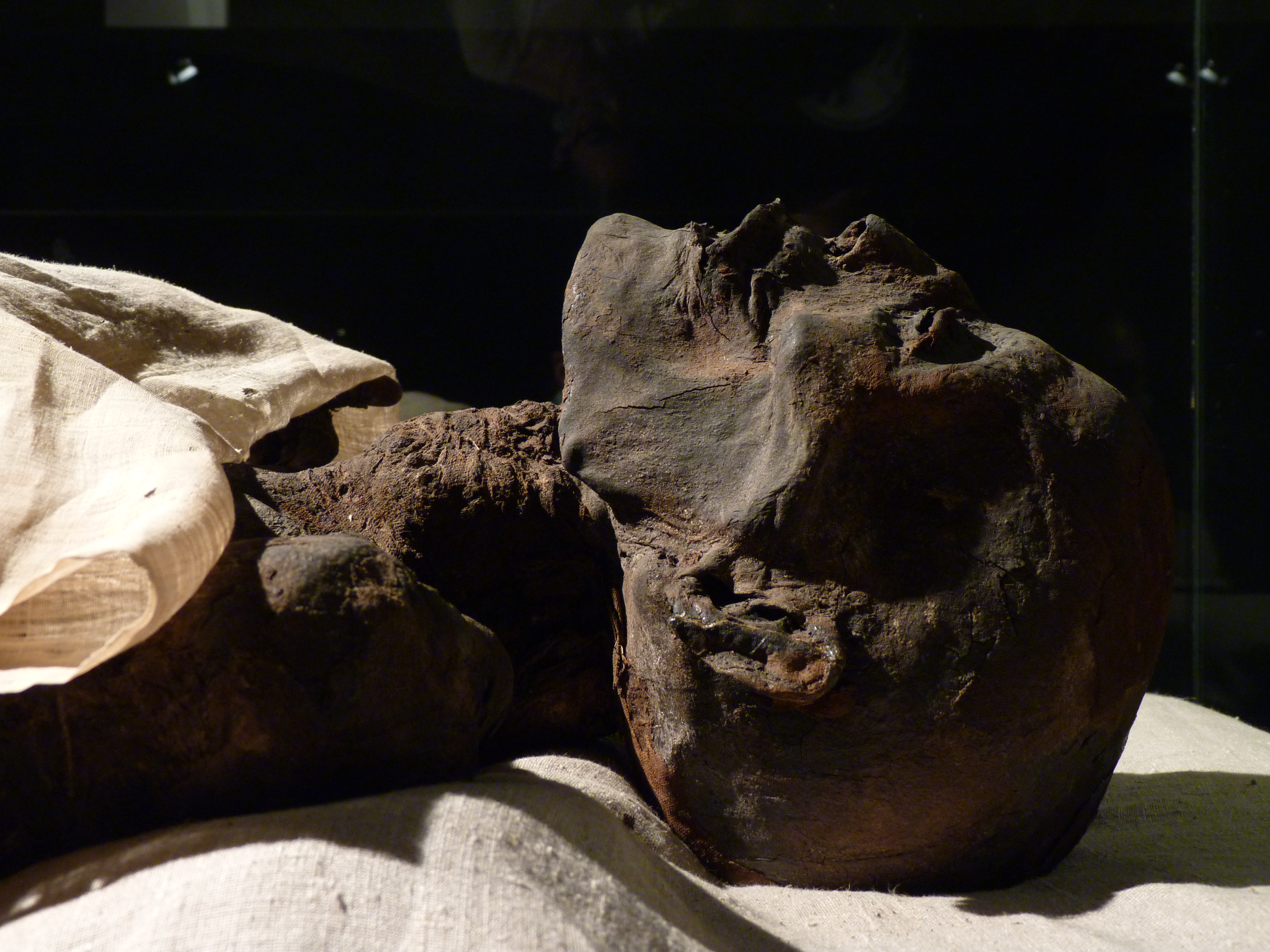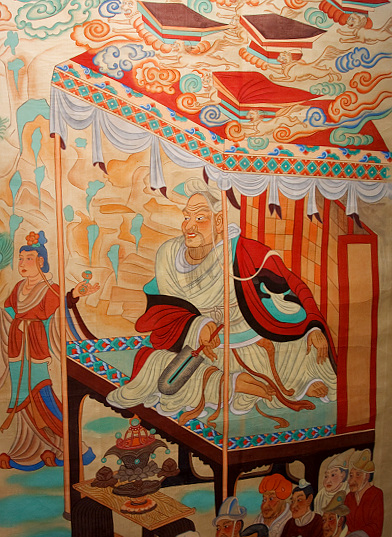|
Daikan EnŇć
Dajian Huineng or Hui-nengThe Sutra of Hui-neng, Grand Master of Zen, with Hui-neng's Commentary on the Diamond Sutra, translated by Thomas Cleary, Shambhala Publications, 1998 (; February 27, 638 ‚Äď August 28, 713), also commonly known as the Sixth Patriarch or Sixth Ancestor of Chan Buddhism, Chan (Traditional Chinese characters, traditional Chinese: Á¶™ŚģóŚÖ≠Á•Ė), is a semi-legendary but central figure in the early history of Chinese Chan Buddhism. According to tradition Huineng was an uneducated layman who suddenly Enlightenment in Buddhism, attained awakening (Chinese: Ť¶čśÄß, KenshŇć, jianxing) upon hearing the Diamond Sutra. Despite his lack of formal training, he demonstrated his understanding to the fifth patriarch, Daman Hongren, who then supposedly chose Huineng as his true successor instead of his publicly known selection of Yuquan Shenxiu. Huineng is regarded as the founder of the "Sudden Enlightenment" Southern Chan school of Buddhism, which focuses on an immediate ... [...More Info...] [...Related Items...] OR: [Wikipedia] [Google] [Baidu] |
Mummy
A mummy is a dead human or an animal whose soft tissues and Organ (biology), organs have been preserved by either intentional or accidental exposure to Chemical substance, chemicals, extreme cold, very low humidity, or lack of air, so that the recovered body does not Corpse decomposition, decay further if kept in cool and dry conditions. Some authorities restrict the use of the term to bodies deliberately embalming, embalmed with chemicals, but the use of the word to cover accidentally desiccation, desiccated bodies goes back to at least the early 17th century. Mummies of humans and animals have been found on every continent, both as a result of natural preservation through unusual conditions, and as cultural artifacts. Over one million Animal mummy, animal mummies have been found in Egypt, many of which are cats. Many of the Egyptian animal mummies are African sacred ibis, sacred ibis, and radiocarbon dating suggests the Egyptian ibis mummies that have been analyzed were from ... [...More Info...] [...Related Items...] OR: [Wikipedia] [Google] [Baidu] |
Heze Shenhui
Heze Shenhui (Chinese:ŤŹŹśĺ§Á•ěśúÉ/ŤŹŹś≥ĹÁ•ěšľö; Wade‚ÄďGiles: Shen-hui; Japanese: Kataku Jinne, 684‚Äď758) was a Chinese Buddhist monk of the so-called "Southern School" of Zen, who "claimed to have studied under Huineng." Shenhui is notable for his strident attacks on Yuquan Shenxiu and the associated "Northern School", which was the most prominent branch of Chan Buddhism in China at the time. He accused them of propagating ''gradual teachings'', as opposed to his own ''sudden teachings''. Shenhui's own lineage, called the Heze lineage (ŤŹŹśĺ§Śģó), probably died out around the time of the Great Anti-Buddhist Persecution in 845, with Guifeng Zongmi being the only notable monk in the lineage. Biography Shenhui was born in Xiangyang with the surname Gao (ťęė). He learned The Five Classics of Confucius and the philosophy of Laozi and Zhuangzi at a young age. At the age of 14 he became a monk under Huineng, a disciple of Hongren and the founder of the Southern School of Zen. For ... [...More Info...] [...Related Items...] OR: [Wikipedia] [Google] [Baidu] |
Wisdom Without A Teacher
Wisdom without a teacher (Chinese: ÁĄ°Śłęśôļ, pinyin: w√ļshńęzh√¨; Japanese: ÁĄ°ŚłęÁ訜āü, mushi-dokugo, Skt. svayaŠĻÉbhŇęj√ĪńĀna anńĀcńĀryaka), sometimes also called "self-enlightened and self-certified," or in Japanese, is a term used in Zen Buddhism to refer to the experience of a Zen practitioner reaching enlightenment (bodhi) or kensho without the aid of a master or teacher.Bernard Faure. Visions of Power: Imagining Medieval Japanese Buddhism, page 48, Princeton University Press, 1996Nguyen, T.T.D. (Re-)invented Chan Lineage, Unique Vietnamese Meditation School, or Both? Th√≠ch Thanh TŠĽę‚Äôs ‚ÄúRevived‚ÄĚ Tr√ļc L√Ęm Tradition of ThiŠĽĀn T√īng. ''Religions'' 2024, ''15'', 352. https://doi.org/10.3390/rel15030352 The idea of wisdom without a teacher is often considered suspect among various Zen schools, like in the modern Japanese SŇćtŇć school. William Bodiford writes that since the risk of self-delusion is high, it is common for Zen disciples to rely on their teacher t ... [...More Info...] [...Related Items...] OR: [Wikipedia] [Google] [Baidu] |
Patriarch Huineng
The highest-ranking bishops in Eastern Orthodoxy, Oriental Orthodoxy, the Roman Catholic Church (above major archbishop and primate), the Hussite Church, Church of the East, and some Independent Catholic Churches are termed patriarchs (and in certain cases also ''popes'' ‚Äď such as the pope of Rome or pope of Alexandria). The word is derived from Greek ŌÄőĪŌĄŌĀőĻő¨ŌĀŌáő∑Ōā (''patriarchńďs''), meaning "chief or father of a family", a compound of ŌÄőĪŌĄŌĀőĻő¨ (''patria''), meaning "family", and ŠľĄŌĀŌáőĶőĻőĹ (''archein''), meaning "to rule". Originally, a ''patriarch'' was a man who exercised authority as a pater familias over an extended family. The system of such rule of families by senior males is termed patriarchy. Historically, a patriarch has often been the logical choice to act as ethnarch of the community identified with his religious confession within a state or empire of a different creed (such as Christians within the Ottoman Empire). The term developed an ecclesias ... [...More Info...] [...Related Items...] OR: [Wikipedia] [Google] [Baidu] |
Awakening Of Faith In The Mahayana
''Awakening of Faith in the MahńĀyńĀna'' (AF, , reconstructed Sanskrit title: ''*MahńĀyńĀna-ŇõraddhotpńĀda-ŇõńĀstra'') is an influential Mahayana Buddhist treatise for East Asian Buddhism. Though traditionally attributed to the 2nd century CE Indian master AŇõvaghoŠĻ£a, no Sanskrit version is extant and it is widely regarded by many contemporary scholars as having been composed in China.Gardner, Alex"On the ''Awakening of Faith in the MahńĀyńĀna''."''Buddha-Nature: A Tsadra Foundation Initiative'', October 9, 2019. The main theories of the authorship of the ''Awakening of Faith'' among contemporary scholars now point to either the 6th century Indian monk translators ParamńĀrtha and Bodhiruci, or alternatively to one of their Chinese students. Origin and authorship While the text is traditionally attributed to AŇõvaghoŠĻ£a, no Sanskrit version of the text is extant. The two earliest existing versions are written in Chinese, and contemporary scholars widely accept the theory t ... [...More Info...] [...Related Items...] OR: [Wikipedia] [Google] [Baidu] |
ŇöŇęraŠĻÖgama SŇętra
The ''ŇöŇęraŠĻÖgama SŇętra'' (, ''SŇętra of the Heroic'' ''March'') (Taisho no. 945) is a Mahayana Buddhist sutra that has been especially influential on Korean Buddhism (where it remains a major subject of study in SŇŹn monasteries) and Chinese Buddhism (where it remains a regular part of the daily liturgy in all Chinese Buddhist monasteries and a major subject of doctrinal study).Benn, James A. ''Another Look at the Pseudo-ŇöŇęraŠĻÉgama sŇętra.'' Harvard Journal of Asiatic Studies, Vol. 68, No. 1 (Jun., 2008), pp. 57-89, Harvard-Yenching Institute, It is important for Zen/Chan Buddhism and Chinese Pure land Buddhism (where it is considered a central scripture).Venerable Master Chin Kung; Li Ping Nan. ''The Awakening of Compassion and Wisdom,'' p. 199. The doctrinal outlook of the ''ŇöŇęraŠĻÖgama SŇętra'' is that of Buddha-nature, Yogacara thought, and esoteric Buddhism. The ''ŇöŇęraŠĻÖgama SŇętra'' was widely accepted as a sutra in East Asian Buddhism, where it has traditi ... [...More Info...] [...Related Items...] OR: [Wikipedia] [Google] [Baidu] |
Lotus Sutra
The ''Lotus SŇętra'' (Sanskrit: ''Saddharma PuŠĻኳćarńęka SŇętram'', ''SŇętra on the White Lotus of the True Dharma'', zh, p=F«éhu√° jńęng, l=Dharma Flower Sutra) is one of the most influential and venerated Buddhist MahńĀyńĀna sŇętras. It is the main scripture on which the Tiantai along with its derivative schools, the Japanese Tendai and Nichiren, Korean Cheontae, and Vietnamese Thi√™n Thai schools of Buddhism were established. It is also influential for other East Asian Buddhist schools, such as Zen. According to the British Buddhologist Paul Williams, "For many Buddhists in East Asia since early times, the ''Lotus SŇętra'' contains the final teaching of Shakyamuni Buddha‚ÄĒcomplete and sufficient for salvation." The American Buddhologist Donald S. Lopez Jr. writes that the ''Lotus SŇętra'' "is arguably the most famous of all Buddhist texts," presenting "a radical re-vision of both the Buddhist path and of the person of the Buddha." Two central teachings ... [...More Info...] [...Related Items...] OR: [Wikipedia] [Google] [Baidu] |
Vimalakirti Sutra
The ''Vimalakńęrti NirdeŇõa'' (Devanagari: ŗ§Ķŗ§Ņŗ§ģŗ§≤ŗ§ēŗ•Äŗ§įŗ•ćŗ§§ŗ§Ņŗ§®ŗ§Ņŗ§įŗ•ćŗ§¶ŗ•áŗ§∂) (sometimes referred to as the ''Vimalakńęrti SŇętra'' or ''Vimalakńęrti NirdeŇõa SŇętra'') is a Buddhist text which centers on a lay Buddhist meditator who attained a very high degree of enlightenment considered by some second only to the Buddha's. It was extremely influential in East Asia, but most likely of considerably less importance in the Indian and Tibetan sub-traditions of MahńĀyńĀna Buddhism. The word ''nirdeŇõa'' in the title means "instruction, advice", and Vimalakńęrti is the name of the main protagonist of the text, and means "Taintless Fame". The sutra teaches, among other subjects, the meaning of nondualism, the doctrine of the true body of the Buddha, the characteristically MahńĀyńĀna claim that the appearances of the world are mere illusions, and the superiority of the MahńĀyńĀna over other paths. It places in the mouth of the upńĀsaka (lay practitioner) Vimalakńęrt ... [...More Info...] [...Related Items...] OR: [Wikipedia] [Google] [Baidu] |
MahńĀyńĀna MahńĀparinirvńĀŠĻáa SŇętra
The ''MahńĀyńĀna MahńĀparinirvńĀŠĻáa SŇętra'' (Sanskrit; , ; Vietnamese: ''Kinh ńźŠļ°i B√°t NiŠļŅt B√†n'') or ''Nirvana Sutra'' for short, is an influential Mahayana, MahńĀyńĀna Buddhist Sutra, scripture of the Buddha-nature class. The original title of the sutra was ''MahńĀparinirvńĀŠĻáamahńĀsŇętra'' (''Great Scripture of the Great Perfect NirvńĀŠĻáa'') and the earliest version of the text was associated with the MahńĀsńĀŠĻÉghika-LokottaravńĀda school.Baums, StefanReview of Habata, ''Die zentralasiatischen Sanskrit‚ÄźFragmente des MahńĀparinirvńĀŠĻáa‚ÄźmahńĀsŇętra''. Indo‚ÄźIranian Journal 58: 71‚Äď78./ref> The sutra was particularly important for the development of East Asian Buddhism. The ''Nirvana sutra'' uses the backdrop of the Buddha's Parinirvana, final nirvana to discuss the nature of the The Buddha, Buddha, who is described in this sutra as undying and eternal, without beginning or end. The text also discusses the associated doctrine of buddha-nature (Buddha-nature, tat ... [...More Info...] [...Related Items...] OR: [Wikipedia] [Google] [Baidu] |
LaŠĻÖkńĀvatńĀra SŇętra
The ''LaŠĻÖkńĀvatńĀra SŇętra'' (Sanskrit: ŗ§≤ŗ§ôŗ•ćŗ§ēŗ§ĺŗ§Ķŗ§§ŗ§ĺŗ§įŗ§łŗ•āŗ§§ŗ•ćŗ§įŗ§ģŗ•ć, "Discourse of the Descent into LaŠĻÖkńĀ", , Chinese: ŚÖ•ś•ěšľĹÁ∂ď) is a prominent Mahayana Buddhist sŇętra. It is also titled ''LaŠĻÖkńĀvatńĀraratnasŇętram'' (''The Jewel Sutra of the Entry into LaŠĻÖkńĀ,'' Gunabhadra's Chinese title: ś•ěšľĹťėŅŤ∑茧öÁĺÖŚĮ∂Á∂ď l√©ngqi√© ńĀb√°duŇćlu√≥ b«éojńęng) and ''SaddharmalaŠĻÖkńĀvatńĀrasŇętra'' (''The Sutra on the Descent of the True Dharma into LaŠĻÖkńĀ''). A subtitle to the sutra found in some sources is "''the heart of the words of all the Buddhas''" (šłÄŚąášĹõŤ™ěŚŅÉ yiqiefo yuxin, Sanskrit: ''sarvabuddhapravacanahŠĻõdaya''). The ''LaŠĻÖkńĀvatńĀra'' recounts a teaching primarily between Gautama Buddha and a bodhisattva named MahńĀmati ("Great Wisdom"). The sŇętra is set in mythical LaŠĻÖkńĀ, ruled by RńĀvaŠĻáa, the king of the rńĀkŠĻ£asas. The ''LaŠĻÖkńĀvatńĀra'' discusses numerous Mahayana topics, such as YogńĀcńĀra philosophy of mind-only (' ... [...More Info...] [...Related Items...] OR: [Wikipedia] [Google] [Baidu] |



